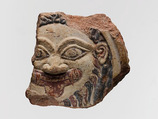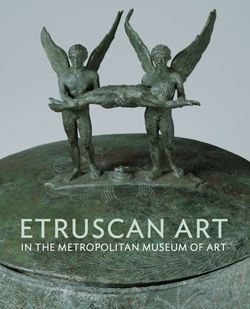Terracotta antefix with the head of Medusa
The head of the Gorgon Medusa, known as a gorgoneion, was a popular motif for terracotta antefixes, ornamental covers used to conceal the ends of tiles along the edge of a roof. Antefixes of this type were especially pervasive in Sicily and southern Italy. During the Archaic period, Medusa was depicted as a monstrous creature with wide eyes and a fierce grin, a type exemplified by the antefix. The exaggerated features and the remarkably well- preserved white, black, and red polychromy would have allowed this face, repeated on multiple antefixes, to be seen by viewers on the ground.
Due to rights restrictions, this image cannot be enlarged, viewed at full screen, or downloaded.



